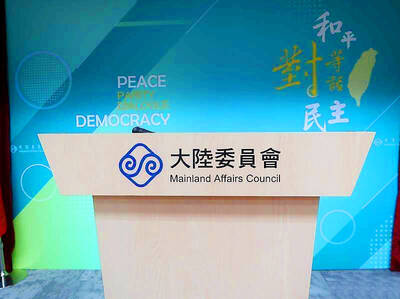US Federal Reserve officials, underestimating the spread of credit-market turmoil, focused at their Aug. 7 meeting on inflation and slowing productivity.
Minutes of the session released on Tuesday showed that the Fed was intent on securing credibility as an inflation fighter just 18 months into Chairman Ben Bernanke's term.
Even though the central bank cut the discount rate on Aug. 17, the emphasis on prices forms the backdrop for deliberations next month.
Investors now anticipate policymakers will lower the benchmark rate by a quarter point to 5 percent at or before their Sept. 18 meeting. Anxiety about inflation may keep officials from a larger reduction, or discourage them from signaling a series of cuts, economists said.
"Concerns about upside inflation risk and their credibility will play a role in tempering how aggressively they will be willing to ease," said Brian Sack, vice president at Macroeconomic Advisers LLC in Washington and a former Fed economist.
"It won't prevent them from easing in September," he said.
The central bank did signal greater concern about the threat to the economic expansion from credit markets than it showed in the statement after the Aug. 7 meeting.
A deeper deterioration in financial markets "might require a policy response" depending on the effect on the outlook for growth, the minutes showed.
By Aug. 17, the Fed dropped its reference to inflation entirely when it cut the discount rate and said "the downside risks to growth have increased appreciably."
Records of the emergency videoconference where policymakers changed course won't be released until October.
The central bank at the start of the month still viewed the upheaval in credit markets as concentrated in subprime mortgages, with "little net change in the cost of credit for investment-grade businesses," the minutes showed.
That conclusion overlooked increasing signs of stress in several markets, analysts said. At the time of the Aug. 7 meeting, the stock market had lost about US$1.3 trillion in market capitalization since benchmark indexes reached records last month.
On July 24, Countrywide Financial Corp, the biggest US mortgage lender, reported its third straight decline in quarterly profit, as even prime borrowers struggled with debt payments. The earnings release showed that delinquencies were spreading into less risky loans.
"The minutes indicate they underestimated how severe the problems were in the credit markets," said Scott Minerd, chief investment officer at Guggenheim Partners LLC in Santa Monica, California. "The market was clearly coming unglued prior to the meeting."
Policymakers have employed a range of tools since their last scheduled meeting to ease the credit crunch. They first injected the most funds into money markets since the aftermath of the Sept. 11, 2001, terrorist attacks, then cut the rate charged to banks for direct loans from the Fed.
The Fed has also allowed banks to channel discount-window borrowings to their securities subsidiaries to help improve clients' access to capital. Officials clarified that they will accept as collateral securities such as asset-backed commercial paper sold by special-purpose companies.
Still, financing remains costly or constrained for riskier securities and loans.
"Given the way the market is, I think it would be very difficult" for the Fed to avoid cutting its target rate next month, said John Silvia, chief economist at Wachovia Corp in Charlotte, North Carolina. "The Fed will go ahead and ease 25 basis points in September and then see what happens after that."
Policymakers still weren't convinced that inflation had receded enough to relax their guard at the start of the month, the minutes showed. Part of the moderation in the four months through June was due to "volatile" categories such as clothing, the Fed said. Inflation expectations over the next year also "remained unchanged" even though gasoline prices had fallen.
"Participants remained concerned about factors that could augment inflation pressures," including a slower trend growth rate in productivity, the Fed said.
It also cited high levels of "resource utilization," a reference to unemployment that remains historically low, economists said.
Productivity, or the amount that workers produce per hour, rose about 1 percent last year, the smallest gain since 1995, US Labor Department figures show. Fed staff economists took account of slower productivity in cutting their predictions for economic growth this year and next year, the minutes said.
"If you have slower productivity growth, tight markets translate into more inflation, that is why there is this extreme focus on inflation," said Robert Eisenbeis, former head of research at the Federal Reserve Bank of Atlanta. A rate cut is "not a foregone conclusion" at next month's meeting, he said.

MORE VISITORS: The Tourism Administration said that it is seeing positive prospects in its efforts to expand the tourism market in North America and Europe Taiwan has been ranked as the cheapest place in the world to travel to this year, based on a list recommended by NerdWallet. The San Francisco-based personal finance company said that Taiwan topped the list of 16 nations it chose for budget travelers because US tourists do not need visas and travelers can easily have a good meal for less than US$10. A bus ride in Taipei costs just under US$0.50, while subway rides start at US$0.60, the firm said, adding that public transportation in Taiwan is easy to navigate. The firm also called Taiwan a “food lover’s paradise,” citing inexpensive breakfast stalls

TRADE: A mandatory declaration of origin for manufactured goods bound for the US is to take effect on May 7 to block China from exploiting Taiwan’s trade channels All products manufactured in Taiwan and exported to the US must include a signed declaration of origin starting on May 7, the Bureau of Foreign Trade announced yesterday. US President Donald Trump on April 2 imposed a 32 percent tariff on imports from Taiwan, but one week later announced a 90-day pause on its implementation. However, a universal 10 percent tariff was immediately applied to most imports from around the world. On April 12, the Trump administration further exempted computers, smartphones and semiconductors from the new tariffs. In response, President William Lai’s (賴清德) administration has introduced a series of countermeasures to support affected

CROSS-STRAIT: The vast majority of Taiwanese support maintaining the ‘status quo,’ while concern is rising about Beijing’s influence operations More than eight out of 10 Taiwanese reject Beijing’s “one country, two systems” framework for cross-strait relations, according to a survey released by the Mainland Affairs Council (MAC) on Thursday. The MAC’s latest quarterly survey found that 84.4 percent of respondents opposed Beijing’s “one country, two systems” formula for handling cross-strait relations — a figure consistent with past polling. Over the past three years, opposition to the framework has remained high, ranging from a low of 83.6 percent in April 2023 to a peak of 89.6 percent in April last year. In the most recent poll, 82.5 percent also rejected China’s

PLUGGING HOLES: The amendments would bring the legislation in line with systems found in other countries such as Japan and the US, Legislator Chen Kuan-ting said Democratic Progressive Party (DPP) Legislator Chen Kuan-ting (陳冠廷) has proposed amending national security legislation amid a spate of espionage cases. Potential gaps in security vetting procedures for personnel with access to sensitive information prompted him to propose the amendments, which would introduce changes to Article 14 of the Classified National Security Information Protection Act (國家機密保護法), Chen said yesterday. The proposal, which aims to enhance interagency vetting procedures and reduce the risk of classified information leaks, would establish a comprehensive security clearance system in Taiwan, he said. The amendment would require character and loyalty checks for civil servants and intelligence personnel prior to